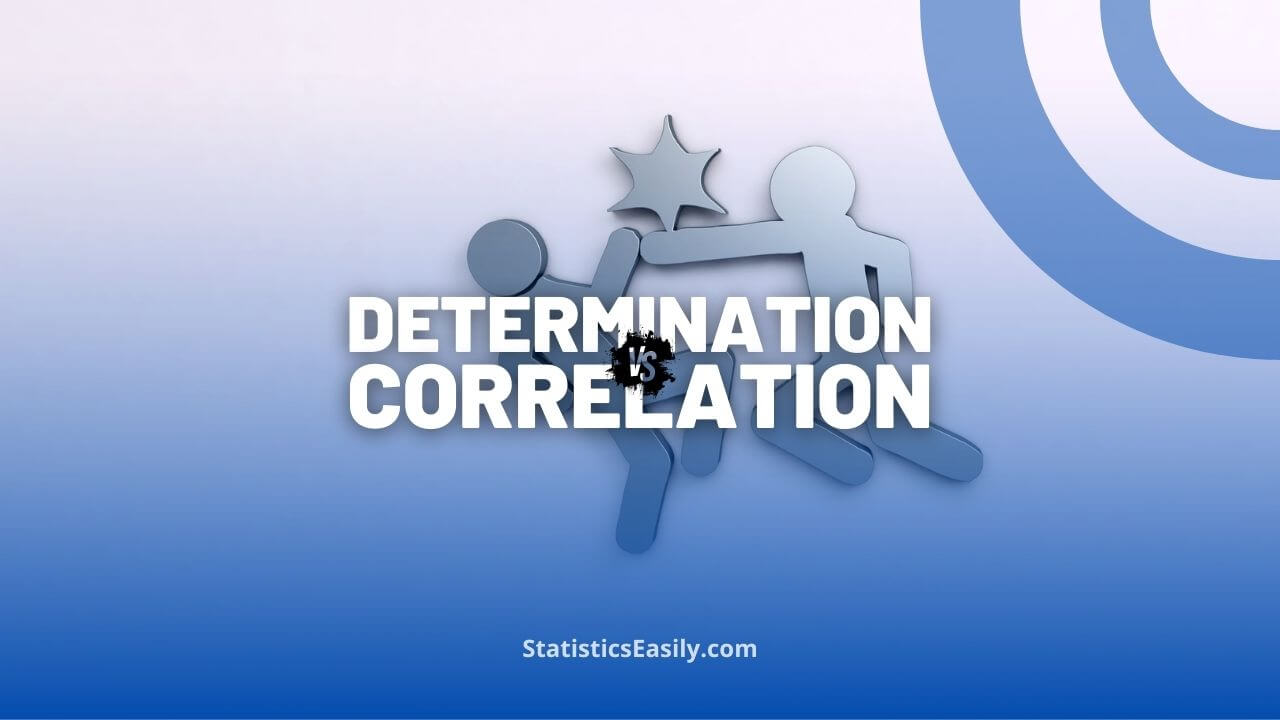Coefficient of Determination vs. Coefficient of Correlation in Data Analysis
What is the difference between Coefficient of Determination vs. Coefficient of Correlation: The coefficient of correlation (r) measures the direction and strength of a linear relationship between 2 variables, ranging from -1 to 1. The coefficient of determination (R²) is the square of the correlation coefficient, representing the variance proportion in a dependent variable explained by an independent variable, ranging from 0 to 1.
Differences Between Coefficient of Determination vs. Coefficient of Correlation
In data analysis and statistics, the correlation coefficient (r) and the determination coefficient (R²) are vital, interconnected metrics utilized to assess the relationship between variables. While both coefficients serve to quantify relationships, they differ in their focus.
The coefficient of correlation quantifies the direction and strength of a linear relationship between 2 variables, ranging from -1 (perfect negative correlation) to 1 (perfect positive correlation).
In contrast, the coefficient of determination (R²) represents the variance proportion in the dependent variable explained by the independent variable, generally ranging from 0 (no explained variance) to 1 (complete explained variance). R² is often expressed as the square of the correlation coefficient (r), but this is a simplification.
Highlights
- The coefficient of correlation (r) ranges from -1 (perfect-negative correlation) to 1 (perfect-positive correlation).
- r measures the linear relationship between variables’ direction and strength.
- R² is often simplified as the square of the correlation coefficient (R² = r²), but the more general formula is R² = 1 − (RSS/TSS).
- R² quantifies the proportion of variance in the dependent variable explained by the independent variable.
- Coefficient of determination (R²) generally ranges from 0 (no explained variance) to 1 (complete explained variance).
Ad Title
Ad description. Lorem ipsum dolor sit amet, consectetur adipiscing elit.
Calculating and Interpreting the Coefficient of Correlation (r)
The coefficient of correlation quantifies the linear relationship between two continuous variables. It is represented as “r” and ranges from -1 to 1. The value of r indicates the strength and direction of the linear relationship:
- -1: Perfect negative linear relationship
- 0: No linear relationship
- 1: Perfect positive linear relationship
To calculate the coefficient of correlation, use the following formula:
r = Σ[(xi – x̄)(yi – ȳ)] / √[Σ(xi – x̄)² * Σ(yi – ȳ)²]
Where xi and yi are individual data points, and x̄ and ȳ are the means of the respective variables.
When interpreting the coefficient of correlation, consider the following:
- Positive values: Direct relationship between the variables
- Negative values: Inverse relationship between the variables
- Values closer to 0: Weak or no linear relationship
Calculating and Interpreting the Coefficient of Determination (R²)
The coefficient of determination, denoted as “R²,” is a metric that quantifies the proportion of the variance in the dependent variable that can be explained by the independent variable. In the context of simple linear regression, R² is often expressed as the square of the correlation coefficient (r), but this is a simplification. R² values generally range from 0 to 1:
- 0: No explained variance
- 1: The model explains all the variance in the dependent variable
However, R² can also be calculated using the formula:
R² = 1 – (RSS/TSS)
where RSS is the Residual Sum of Squares and TSS is the Total Sum of Squares. This formula indicates that R² can be negative when the model performs worse than simply predicting the mean.
When interpreting the coefficient of determination, consider the following:
- Values closer to 1: Stronger explanatory power of the model
- Values closer to 0 (or negative): Weaker explanatory power of the model
Note: R² typically ranges from 0 (no explained variance) to 1 (complete explained variance), but in some cases, R² can be negative when the model performs worse than simply predicting the mean. In such cases, the formula for R² is: R² = 1 – (RSS/TSS), where RSS is the Residual Sum of Squares and TSS is the Total Sum of Squares.
Ad Title
Ad description. Lorem ipsum dolor sit amet, consectetur adipiscing elit.
Recommended Articles
Interested in learning more about data analysis, statistics, and the intricacies of various metrics? Don’t miss out on our other insightful articles on these topics! Explore our blog now and elevate your understanding of data-driven decision-making.
- What’s Regression Analysis? A Comprehensive Guide for Beginners
- How to Report Simple Linear Regression Results in APA Style
- Correlation vs. Causation: Understanding the Difference
- Correlation Coefficient – an overview (External Link)
- Coefficient of Determination vs. Correlation (Story)
- Pearson Correlation Coefficient Statistical Guide
- Can Correlation Coefficient Be Negative?
- Logistic Regression Sample Size (Story)
Frequently Asked Questions (FAQs)
The coefficient of correlation measures the direction and strength of the linear relationship between 2 continuous variables, ranging from -1 to 1.
The coefficient of determination represents the variance proportion in a dependent variable explained by an independent variable, ranging from 0 to 1.
Use the formula: r = Σ[(xi – x̄)(yi – ȳ)] / √[Σ(xi – x̄)² * Σ(yi – ȳ)²].
The determination coefficient is the correlation coefficient square: R² = r².
No, correlation does not necessarily mean causation, as confounding factors may be involved.
No, a low correlation coefficient could indicate a nonlinear relationship rather than the absence of a relationship.
Positive r values indicate a direct relationship, while negative values represent an inverse relationship between variables.
R² values closer to 1 indicate stronger model explanatory power; values closer to 0 suggest weaker explanatory power.
No, R² and r serve different purposes and should not be used interchangeably.
Use these coefficients to assess the relationship between variables, determine model effectiveness, and inform data-driven decision-making.









Hi. Love the explanation here. Just one tiny thing. The range for R2 is not 0-1. R2 can be negative when the model used is worse than simply predicting the mean (the sum of squared residuals is greater than the Total sum of squares). The equation for r2 is not simply “r squared”, it is 1- (RSS/TSS).
Thank you so much for your kind words and for taking the time to point out that important detail. You’re absolutely right — R² can indeed be negative when the model performs worse than simply predicting the mean. We’ve updated the article to correct this simplification and to clarify that R² is not always confined to the 0-1 range. We greatly appreciate your input and are always striving to improve the accuracy of our content.